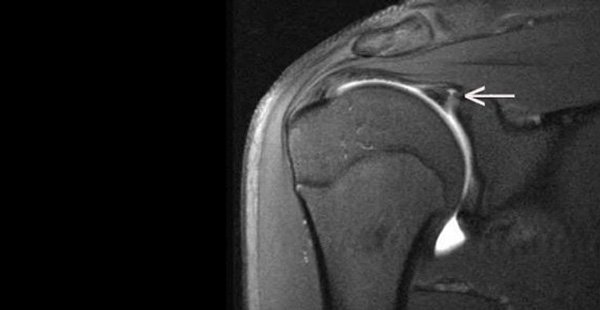Research Article Review Sept 2014
Rehabilitation Exercises for Athletes with Biceps Disorders and SLAP Lesions – A Continuum of Exercises with Increasing Loads on the Biceps; Cools et al (2014), AJSM, Vol 42, No. 6.
Overview
Biceps disorders and SLAP lesions are relatively common injuries amongst overhead athletes and can generally be split into three main groups; inflammatory/degenerative lesions of the long head of biceps/superior labrum, instability of the biceps tendon in the bicipitial groove and superior labral anterior-posterior (SLAP) lesions.
SLAP repairs are performed when the long head of biceps and labrum become detached from the surface of the glenoid within the shoulder. Following this type of surgery it is typical that the biceps be ‘rested’ and no resisted activity allowed for eight weeks and then controlled with a steady progression of strengthening from 12 weeks post-operatively.
The authors of this study have utilised a series of relatively well established rehabilitation exercises for the shoulder and asked the question, how much does this exercise activate the biceps muscle? The exercises are split into three main groups; scapular muscle training, rotator cuff muscle training and biceps targeted exercises. Using surface electrodes that measure muscular activity, these exercises have then been scored and ranked in terms of the amount of activity of biceps brachii, known as the percentage of maximal voluntary isometric contraction or %MVIC. Other values were also recorded for various muscles around the shoulder complex.
The results are relatively unsurprising in that, when used in its normal anatomical functional capacity – shoulder elevation, elbow flexion and wrist supination – biceps exhibits it’s maximal muscular activity. What is interesting from the article is that under controlled circumstances with moderate loads (10 repetition maximum) that biceps activity never reaches 50% of its available capacity and is therefore defined as moderate in terms of %MVIC. Also it is shown in the article that exercises targeting the serratus anterior muscle – an important scapula stabiliser – tend to activate biceps more than exercises targeting the trapezius muscles or rotator cuff muscles.
Rather frustratingly the authors do not really list the exercises in order of loading/activity performed by biceps in an easily digestible way and the reader has to continually flick backwards and forwards through the article, therefore I have provided that list below with comparison figures for serratus anterior and lower fibres of trapezius – two very important muscles in shoulder rehabilitation.
Critique
The main flaw, as with most of these types of study is sample size. There were 32 participants, all fit and healthy with no previous history of shoulder problems. So while this data is interesting it may not be particularly representative of the entire population or those with injury, post surgery of other shoulder problems.
Thanks for reading,
Nick Wirth
Senior Physiotherapist

